Rhinoplasty in Iran, Best surgoen and Procedure
Who is the best rhinoplasty surgeon in Iran?
The statistics of rhinoplasty in Iran, or a nose job, indeed have the highest rank among cosmetic surgeries, but rhinoplasty is not just for cosmetic reasons.
A surgery that has a significant effect on the appearance of your face and its contour and can restore the blessing of breathing to you is rhinoplasty. For this reason, you should approach this matter with caution.
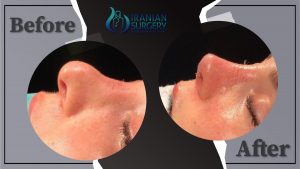
In Iran, most cosmetic surgeon specialists are highly capable of performing nose jobs, but if, for any reason, your nose is injured or broken, or you have sinus and breathing problems, you should consult an ENT specialist first.
The important thing in all cosmetic procedures is to go to the specialists. Don’t settle for a general surgeon. Your face is as valuable as your life.
Rhinoplasty should help you get closer to your desired looks, and the medical team should be sure the new shape and appearance of the nose do not cause breathing problems. The more accurate your choice of a cosmetic surgeon specialist, an ENT, or even a Maxillofacial specialist is, the lower the odds of you needing a revision rhinoplasty will be.
In addition to all the medical facilities we can provide you, rhinoplasty cost in Iran starts at $1,500.
| General Information | Cost |
| Open Rhinoplasty Method: Visible scars – Open rhinoplasty involves creating an incision along the width of the columella and lifting the skin so as to allow greater visibility and increased precision. | 800-3200 $ |
| Closed Rhinoplasty Method: No Visible Scars – A closed rhinoplasty technique makes all incisions within the nose, leaving no visible scars. | 1000-3500 $ |
| Revision Rhinoplasty Revision Rhinoplasty (Open Method) – Revision rhinoplasty is a surgical procedure that revises or corrects a previous surgery | 1500-4200 $ |
| Septorhinoplasty Open Method – septorhinoplasty is surgery to fix both your nose (also called rhinoplasty) and your nasal septum (also called septoplasty). | 1400-2700 $ |
Bulbouse Nose Rhinoplasty Nose tip surgery is a type of rhinoplasty which is carried out to change the tip of the nose, including reshaping a bulbous nose tip. This particular form of rhinoplasty changes the shape of the nose by modifying the structure of the underlying cartilage. This reduces the size and roundness of the bulbous nose tip | 1600-3400 $ |
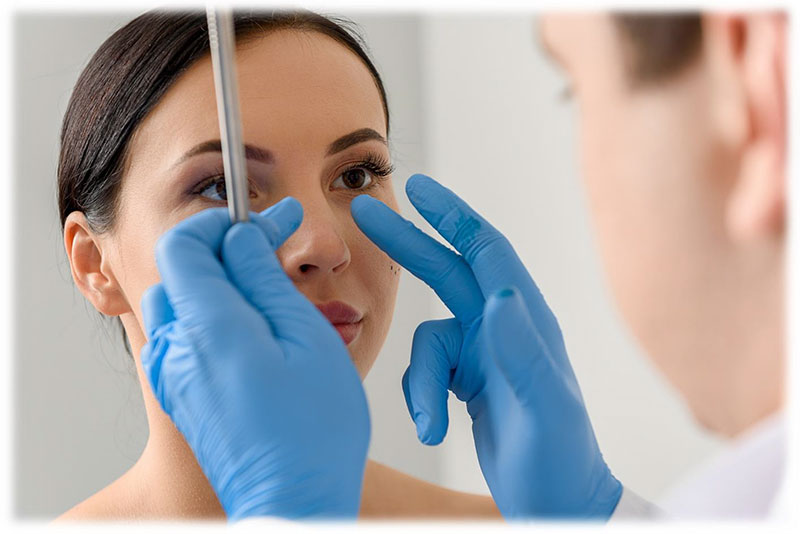
With Iranian surgery, the cost of rhinoplasty in Iran in the highest quality Iranian hospitals in Tehran is about $ 1,500 and in Shiraz is about $ 1,200. The cost includes surgeon fees, operating room, preoperative tests and postoperative medications.
The Iranian Surgery team will provide you with comprehensive information about rhinoplasty in Iran and will provide you with the best plastic surgery centers as well as the best plastic surgeons.
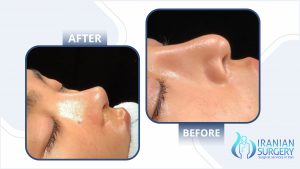
Read more about : Rhinoplasty in Iran before and after
General information about Nose job in Iran
The following table describes general information about Rhinoplasty (Nose job ) surgery in Iran including Rhinoplasty cost in Iran, recovery time, and to name but a few.
| General Information | |
| Cost | $ 1500 |
| Anesthesia | General |
| Hospital Stay | 1 Day |
| Back to Work | 7 Days |
| Duration of Operation | 1-4 Hours |
| Minimum Stay in Iran | 7 Days |
Free Consultation
Rhinoplasty in Iran, a Recommendation to All but Don’t Settle for Less If Less Will Cost You More
The world of aesthetic and plastic surgery has gone through a significant change ever since the day it became available as an option for those who weren’t satisfied with their facial features, needed help as a result of being in an accident or simply were looking for something new to spice things up in their life. And this availability has turned out to be both a blessing and a curse. Since surgeries like rhinoplasty have become more common place, they are no longer a luxury and more people get to explore this option and choose to benefit from the positive changes it can bring for them.
On the other hand, however, this widespread and growing demand for aesthetic procedures such as a nose job has led to the creation of a huge market in Iran which for some rhinoplasty surgeons is just that, a market; and they want a piece of the pie regardless of being competent or qualified enough to deserve it.So, to all our dear clients at Iranian Surgery, who come to us looking for a cheap way to make a big change in their appearance we say: don’t be fooled by the big bold claims made by plastic surgeons, you practically know nothing about, who would fix your nose at a very low price. Do your due diligence, ask for before and after photos and, if possible, even track down some of their previous patients and make sure most of them are satisfied with their results. Because, for whatever reason, if you decide to cheap out on your rhinoplasty, you are very likely to end up with an unfavorable result that would then force you to undergo a second surgery (also called a revision rhinoplasty) that would cost you much more than what you refused to pay in the first place.
Reasons like Iran is the best place for someone to have their Rhinoplasty or Secondary Rhinoplasty when it comes to ENT or Plastic Surgeon Specialist. Professionality is what Iranian Surgery offers compared to India and Turkey. Not only does Iran has the best surgeons, but it also has world-class hospitals. Iran can present these top-notch items at a very low price, the same quality as any perfect rhinoplasty but cheaper. Once you get through your Rhinoplasty or even before the surgery starts, Iran can show you its welcoming culture and wonders. Many Unesco World Heritage Sites, the wonders of Nature, Persian cuisine, Bazaars, Iran’s special handicrafts, and artistic items, await you at a reasonable price.
In this article, we want to introduce you to the best rhinoplasty surgeons and the most specialized cosmetic surgery centers in Iran.
People’s noses are divided into two general categories based on the shape of their bones and cartilage.
Bony nose surgery
Fleshy nose surgery
The main difference between fleshy and bony noses is that bony noses have strong cartilage, but fleshy noses have weaker cartilage and bone.
The most common problem with bony noses is their excessive hump. The success of bony noses is due to the presence of a thin layer of skin on the nasal bone. In this article, we tried to review bony nose surgery and explain the conditions that you must have to have rhinoplasty in Iran.
Why is Iran the best country in the world for nose surgery?
Iran is a record holder when it comes to performing rhinoplasty operations and the reason for that is highly experienced surgeons and top-notch medical services offered in Iran.
Iran ranks fifth in the world in terms of the number of rhinoplasty surgeries. According to the BBC website, Iran is among the top ten countries in the world in terms of the number of cosmetic surgeries. In 2021 alone, about 175,000 surgical and no-surgical cosmetic procedures have been performed in Iran.
Read more about : Rhinoplasty in Iran Before and after
Read more about : Revision rhinoplasty in Iran
Overview
Man, instinctively seeks beauty and desires to become more beautiful; With the advancement of medical science, it has become possible for everyone to change their face, the most important external organ of the body and the showcase of communication with the outside world for each person, to whatever shape or form they wish. Rhinoplasty is one of the first and most common cosmetic procedures to improve the appearance of people, which is very popular in the world and especially in Iran.
During this process, the plastic surgeon changes the cartilage and bone of the nose to carve out a more desirable appearance. For men and women who are dissatisfied with the size and shape of their nose, we offer an effective and reliable cosmetic solution, especially when they entrust the work to an experienced and skilled cosmetic surgeon.
Objectives of Rhinoplasty
Rhinoplasty can be used to change the shape, size and overall appearance of the nose, here are examples of common requests that patients have from their surgeons:
- Narrow the nasal bone.
- Narrow or widen the nostrils.
- fix a deviated septum
- Change the tip of the nose.
- Change the angle between the nose and the upper lip.
- To correct structural defects (respiratory problems).
- In most cases, the incisions used to make the change may be hidden inside the nose or may be indistinguishably visible on the nose; The overall goal is to improve the appearance and maintain a natural appearance in accordance with other parts of the face.
Why is Iran good for rhinoplasty?
Iran continues to be a world leader in rhinoplasty surgery and getting a nose job in Iran or rhinoplasty is one of the most common cosmetic procedures.
Most patients requesting to have their rhinoplasty done in iran,Feel their noses are droop and too large for their faces.in these instances, a beautiful and natural looking result makes their whole face more attractive.
With our Rhinoplasty surgeons amazing work we can easily provide you the Nose and the face you want ,a good balanced beautiful shaped nose for you.

Read more about : Rhinoplasty in Iran review
The best rhinoplasty surgeon in iran
How can I find the best rhinoplasty surgeon in Iran?
The factors that the best rhinoplasty surgeons should have:
- Experience
Because of performing a great number of procedures, they become knowledgeable and highly skilled which make them very famous worldwide.
2.Expertise in different types of rhinoplasty surgery
It is of paramount importance that your surgeon be expert in various types of nose surgery including open rhinoplasty, close rhinoplasty and non-surgical rhinoplasty.
Who is the best nose job surgeon in Iran?
Dr. Vahid Dastjerdi
Specialist plastic, cosmetic and reconstructive surgeon
Board-certified
Member of the Iranian Plastic Surgeons Association
Type of Activity:
Member of the Iranian Plastic Surgeons Association and the faculty of Shiraz University of Medical Sciences
Workplace hospitals:
Kausar Hospital, Abu Ali Sina Hospital
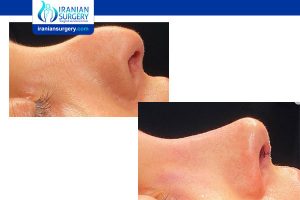
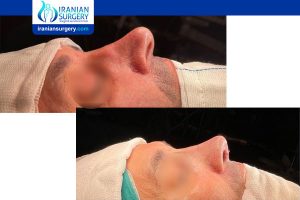
About Iranian Surgery
Iranian surgery is an online medical tourism platform where you can find the best Rhinoplasty Surgeons in Iran.
All Rhinoplasty surgeons working with Iranian Surgery specialize in plastic surgery and perform rhinoplasty surgeries in well-equipped hospitals, so after rhinoplasty (Nose job) in Iran you will face the least possible complications.
For more information about the cost of your rhinoplasty in Iran and to schedule an appointment in advance, you can contact Iranian Surgery consultants through WhatsApp number +98 901 929 0946. This service is completely free.

Who Goes for Rhinoplasty?
Most people who have rhinoplasty have problems with the appearance of their nose and want to reshape their nose in proportion to the size of their face. A smaller percentage of rhinoplasty volunteers are patients who have structural discomfort or a damaged nose.
What Is the Best Age for Rhinoplasty?
Teenagers and the young care a lot about the appearance of their face. So, it is no surprise that rhinoplasty is quite popular among this age group of 15-25 years.
The growth plates that cause bone growth in the nose close in girls up to 15 years old and in boys at 17 years old, so the permissible age for rhinoplasty in girls is about 16 years old and in boys 17 years old. However, doctors consider being at least 18 years old to be the best time to think about having a rhinoplasty.
There is no age requirement for rhinoplasty, however, to avoid the consequences of infection and anesthesia, the patient should be in good physical health. Moreover, to achieve the desired aesthetic results, you should have proper skin elasticity.
Older people can also have the operation and there is no age limit, and doctors recommend local anesthesia for the elderly instead of general anesthesia.
Objectives of Rhinoplasty
Rhinoplasty can be used to change the shape, size and overall appearance of the nose, here are examples of common requests that patients have from their surgeons:
- Narrow the nasal bone.
- Narrow or widen the nostrils.
- fix a deviated septum
- Change the tip of the nose.
- Change the angle between the nose and the upper lip.
- To correct structural defects (respiratory problems).
- In most cases, the incisions used to make the change may be hidden inside the nose or may be indistinguishably visible on the nose; The overall goal is to improve the appearance and maintain a natural appearance in accordance with other parts of the face.
How Do I Choose a Good Surgeon?
Note that rhinoplasty, if performed poorly, can have devastating effects on the patient’s appearance. Therefore, patients should be very cautious when choosing their plastic surgeon. Normally, a person should talk to several doctors before making their final choice. Several factors should be considered about your doctor, and it is important to choose a doctor who specializes in the airway and nasal structure. The Iranian surgery team will help you choose the best specialist doctor based on your needs and wishes.
Rhinoplasty is a very personal process that can affect a person’s mental health and appearance. Therefore, it is of utmost importance that patients choose a surgeon that they feel comfortable with; A doctor who understands their worries and addresses their concerns and arranges a treatment plan to achieve the desired result.
These questions will enable you to eliminate any worries you might have about your operation and your doctor and achieve the desired results:
- Do I like this doctor’s aesthetic approach?
- Will the results look natural?
- Can I imagine myself with this look?
- Do the photos illustrate the results well and are they taken from different angles?
Initial Consultation
After selecting a plastic surgeon, at your request, the Iranian surgery team can arrange an online consultation session with the selected doctor, if possible. Counseling that expands the personal relationship between you and your doctor and starts the treatment planning process.
Rhinoplasty Techniques
Regardless of what type of rhinoplasty the doctor prescribes for the applicant, one of the two main techniques is usually used.
Closed Rhinoplasty Technique
Closed rhinoplasty surgery is generally the preferred method; Because all surgical incisions are made inside the nose and the wounds are all inside. Although the incisions are hidden, the surgeon can still access large areas of the nose to handle a wide range of cosmetic and structural issues.
Open Rhinoplasty technique
Open rhinoplasty surgery allows the doctor more access to the cartilage and bones of the nose, but small scars may remain on the nose. In this method, by making an incision in the cartilage area between the nostrils, the doctor can lift the skin from the tip of the nose and shape the cartilage very precisely. After healing, the incision very small and almost invisible incision site remains on the nose.
Both open and closed rhinoplasty can be very effective. The doctor will determine the appropriate method for each patient based on the natural shape of the nose and the goals of the surgery. Open-nose surgery can work better if the patient wants dramatic changes. This procedure allows the doctor to reshape larger areas of the nose. Closed rhinoplasty can work best if the patient wants to change the septum. However, because each patient’s motivation and purpose are different, there are no strict rules for choosing the right method.
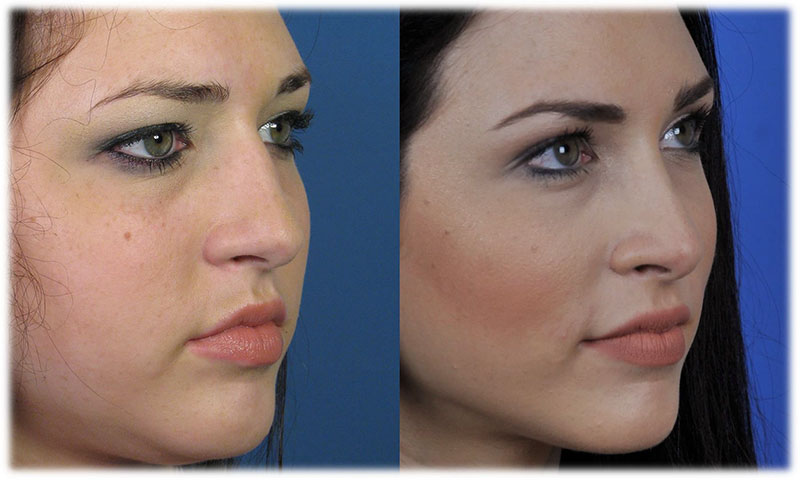
What To Do Before a Rhinoplasty?
Before rhinoplasty, there are several steps that patients can take to speed up the healing process, reduce postoperative complications, and reduce potential risks.
1) Diet
In the weeks leading up to any surgery, it is important for patients to follow a healthy diet. Proper nutrition speeds up recovery and reduces the risk of infection. In particular, people should consume large amounts of fruits and vegetables, grains containing protein; Nutritional supplements are also helpful. Doctors might recommend certain supplements such as vitamin A, vitamin C and Bromelain to those who intend to have rhinoplasty.
At the same time, applicants for rhinoplasty should avoid certain foods and supplements that can slow down recovery and reduce the complications of surgery; In particular, patients should not take supplements containing vitamin E, ginger, ginkgo and ginseng. In addition, some homeopathic and herbal supplements can lead to side effects caused by anesthesia. So, patients should consult their doctor before considering any additional nutrition. Since alcohol can affect the liver’s ability to metabolize properly, many doctors recommend that patients refrain from drinking alcohol in the weeks prior to their surgery.
2) Medications
When preparing for rhinoplasty, patients should inform their doctors about all the medications they are taking. Because some medications can cause side effects before or after surgery. Your doctor may prescribe a temporary safe alternative medicine for the patient.
3) Smoking
The use of Tobacco reduces blood flow throughout the body. Because oxygen cannot reach the incision site quickly enough, smokers may need more time to heal after surgery and have a higher risk of infection and unwanted wounds. Although smokers are not automatically disqualified from having rhinoplasty, they should quit smoking at least two weeks before and two weeks after surgery.
4) Preparing for Recovery
Recovery from rhinoplasty may take several weeks, and patients should be prepared based on how long it will take to heal. In particular, they should take at least two weeks off work and, if possible, find someone who can help them get on with their day-to-day activities for a few days. After rhinoplasty, chewing can be bothersome, so patients should eat soft food for the first few days.
Recovery
Rhinoplasty takes several weeks to heal, and the patient must take specific steps to speed up the recovery and achieve the desired result.
The First Few Days
Absolute rest is very important in the first 48 hours after rhinoplasty; Patients should:
- Keep their head up while sleeping.
- Wear open front clothes so that they do not have to wear them again.
- Apply a cold compress to the face.
- Eat soft foods that contain nutrients and fiber.
- Avoid showering and washing your face as long as your nose is bandaged.
- Replace sterile bandages and gases as recommended by your doctor.
Typically, patients can return to normal life within two weeks of surgery. However, nose care should continue for a long time.
- Avoid strenuous exercise until your doctor tells you to.
- Reduce sodium intake to reduce swelling after surgery.
- Do not neglect the use of strong sunscreens.
- Do not wear glasses or sunglasses for at least four weeks.
It is very important to follow up with your doctor in the first few weeks. The first appointment is usually one week after the nose job. Once the nose bandage is removed, patients will have periodic checkups after a few months.
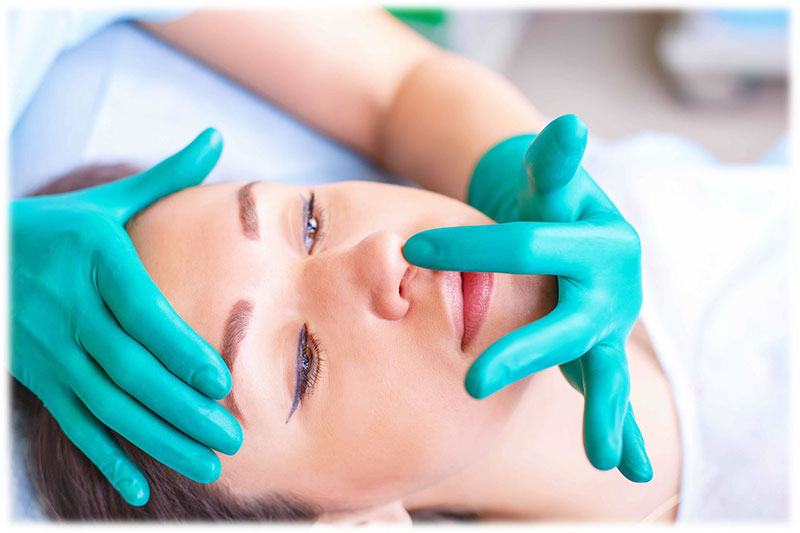
How Long Does It Take to See the Final Results?
Rhinoplasty is unique to each person and the final results of the surgery can be formed from 3 to 6 months after the operation. Side effects such as swelling and bruising around the nose and eyes are reduced and gone two weeks after surgery. While more pronounced changes may be visible in the first few weeks after surgery, the nose reaches its final shape months after surgery.
Is It Possible to Have a Permanent Sign of a Surgery?
Like almost all forms of plastic surgery, scars are likely to remain. In closed nasal surgery, all the incisions are made inside the nose and therefore no scars are visible. In open nasal surgery, an extra incision is made across the lower part of the nose that may leave a small scar. Fortunately, considering the size and location of the incision, the incisions are usually unrecognizable. However, owing to our doctors’ great skill and experience and excellent work quality, in 99% of the cases the surgery will leave no scars, but just to be sure, you can ask your doctor and prepare a cream that will totally eliminate any scars.
Duration of Surgery:
Typically, rhinoplasty takes about an hour or two, however, depending on the surgical goals, the process may be longer for some people. Reconstructive rhinoplasty often takes about four hours. The duration of surgery generally depends on the patient’s goals and your doctor’s specific techniques.
Can I Travel by Plane After Rhinoplasty?
Some doctors recommend that you wait at least a week before getting on a flight. However, other surgeons believe the patient can fly immediately after the surgery.
Plan your Rhinoplasty in Iran with the Best Rhinoplasty Surgeon.
Iranian Surgery is a medical tourism company in Iran that cooperates with the best plastic surgeons, specialists and hospitals in Iran and offers world-class treatments at an affordable cost.
for more information about the cost of Nose job in Iran please contact us.
People also ask about rhinoplasty surgeon in Iran
Like anywhere else, the process of rhinoplasty in Iran is as follows: you are first visited by a doctor and after the initial examinations and taking the necessary photos and CAT scans, you go to the hospital. The tests required for rhinoplasty will be taken and your rhinoplasty will be done the same day or the next. Your anesthesia will be general, and the duration of the operation will usually be between one or two hours. You don't even need to spend the night in the hospital. You have to wear a cast on your nose for a week, and after seven days, you will have another visit with your surgeon. If there is no complication, you can return to your country. Even after, we will do follow-ups with you.
Like researching for anything else, you must know the surgeon who is going to operate on you. Nowadays most Rhinoplasty surgeons in Iran are on social media. Ask for before and after pictures and ask about the doctor's reputation. Most importantly, see if you can link with other patients who have gone under Rhinoplasty with the same surgeon.


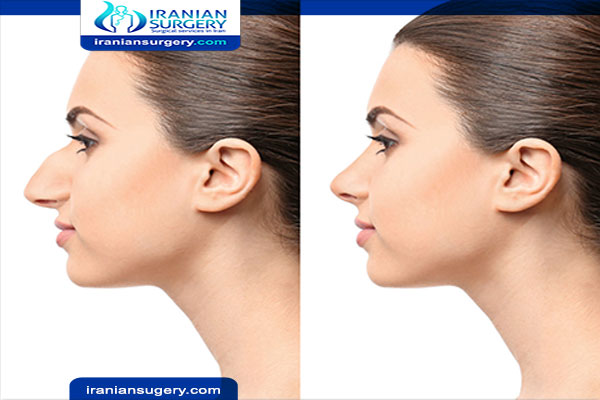

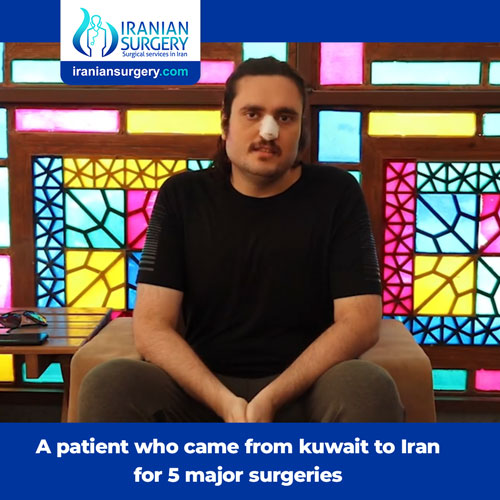
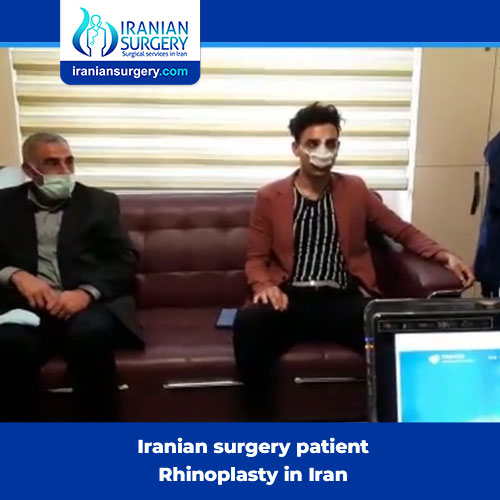
60 Comments
Revision rhinoplasty recovery timeline
After enduring an unhappy outcome with their initial surgery, many patients considering revision rhinoplasty are concerned about the recovery timeline, and when they can return to normal activities. The good news is that patients will already be familiar with the healing process, the inflammation and the bruising.
The first week post revision rhinoplasty is generally the most uncomfortable, when patients are advised to rest and avoid any sort of strenuous activity. How long does revision rhinoplasty swelling last? By day 10, most of the inflammation will be down and the majority of the swelling in the upper part of the nose will be gone within 3 months. However, it’s important to remember that it can take a full year for swelling to completely resolve.
Those wondering how to reduce swelling after revision rhinoplasty( steps after bad rhinoplasty) will be counseled on appropriate steps, which may include elevating the head with pillows during sleep or applying ice packs to the forehead (but avoiding the nose). In some cases, nasal taping can help minimize swelling. This involves applying small tape splints to the nose that help reduce edema.
In more complex surgeries entailing excess scar tissue-related swelling, steroid injections can help expedite the revision rhinoplasty healing process.
Most patients will see visible improvements within a couple of months of their revision rhinoplasty, but the final result may take anywhere from one to two years.
hello tom
best age for a rhinoplasty?
Given that Rhinoplasty is about adjusting and refining the appearance of the nose, the best time to do it is early in life to have the maximum benefit. Before doing rhinoplasty it’s important that you’ve reached full growth of your bones, which is typically around age 18. Having said that, some people mature more quickly and it is possible to do rhinoplasty as young as age 16. This is surgeon dependent.
Hi what does it cost for revision nose plastic surgery please let us know?
thank you
In reply to maria.
hello maria
Revision rhinoplasty costs more than primary rhinoplasty. If a primary nose job costs in iran $2000, a revision can cost $2500.
it’s had better send us your medical ducument and get consultation with rhinoplasty surgeon’s in iran
pleast send your document on what’sapp
00989338460186
thank you
how much nose job surgery in iran?
nose job cost in iran
The minimum rhinoplasty cost in Iran is about $ 1200, and the highest cost of rhinoplasty in Iran is $ 2500.
According to statistics published by the Iranian Plastic Surgeons in 2018, the average cost of rhinoplasty in iran is $2200. However, this figure doesn’t include other expenses, such as anesthesia and operating facilities.
Cost of rhinoplasty in Iran may include:
The cost of a clinic or hospital
Cost of surgeon
Medical tests before surgery for Rhinoplasty
Medications after Rhinoplasty
The cost of traveling to Iran
The duration of the patient’s presence in Iran.
Patient’s place of residence in Iran (hotel or furnished house).
How much is a consultation with rhinoplasty surgeon in iran?
In general, consultation fees rhinoplasty surgeon range from $10 to $25. but you can get free online consultation from nose job surgeon in iran with iraniansurgery.com
Can I Have Multiple plastic Surgery Procedures at the Same Time?
Combined rhinoplasty and other plastic surgery at the same time
Structural defects that inhibit breathing frequently affect the appearance of the nose. For example, a deviated septum or fracture can create a prominent bump or give the nose a crooked appearance.
Correcting structural issues within the nose to improve breathing can also improve the outward appearance, but this isn’t always the case. Combining functional surgery with rhinoplasty ensures that both issues are addressed.
Facial Plastic Surgeons Often Recommend Combined Nasal Surgery
The result of purely functional nose surgery can improve the appearance of the nose, but since aesthetics aren’t the primary objective of the procedure, patients may not get the look they’re after.
The structures of the nose are interconnected, so making cosmetic enhancements through rhinoplasty at the same time as a functional nasal procedure is usually simple and straightforward. Often, rhinoplasty can be completed using the same incisions.
For patients already having surgery to breathe better, correcting cosmetic concerns during the procedure often makes sense. In fact, waiting to perform rhinoplasty can be problematic, as scar tissue can make a nose job more challenging. Plus, having two separate surgeries means undergoing anesthesia and the healing process twice and will increase the cost significantly.
I am 14, I want to do rhinoplasty but my mom says she will let me do it if the doctor says I can. A doctor told me I can do it when I stop growing and a good way to tell is if my foot stopped growing(which it did) and I also have a really bad nose shape and I have trouble breathing. do you think the doctor will say I can? She wants to take me to Tehran, Iran to do it too by the way
When Can Teens Have Rhinoplasty?
A prospective patient’s face needs to reach skeletal maturity — i.e., be fully formed — before they can get a nose job. For girls, this is generally ages 14 or 15 at the earliest. Since boys’ faces grow a little slower, age 15 is the minimum for males. But obviously, skeletal maturity varies from patient to patient. One way to tell if you’re ready: rhinoplasty surgeon(Plastic surgeon) assesses whether the foot is fully grown and hasn’t changed in size for a year. No matter what age you are, though, if you’re not emotionally ready for facial surgery, then you should consider waiting.
When Can Teens Have nose surgery?
Teens should not have a nose job until the nose has reached its adult size. This normally happens at about age 15 or 16 for girls. It usually happens a year or so later for boys.
Hi guys, I’m seriously thinking getting a rhinoplasty in iran tehran, has anyone been before, had a nose job done in iran,does anyone know how much rhinoplasty price in iran tehran?
was it worth it and prices, I can’t seem and find them online,
Hello
I’m very unhappy with the outcome of my first rhinoplasty and I want revision surgery in Iran.Do I need to wait an entire year befor undergoing further surgery?
In general, it is best not to re-operate in the first several months after a failed rhinoplasty since the tissues are still inflamed and less likely to heal favorably. However, the traditional recommendation to wait one year before undergoing revision rhinoplasty is a generalization that applies mostly to thick-skinned patients. Assuming that the nasal framework is sturdy, properly aligned and well-proportioned, waiting 12–18 months in thick-skinned patients is often beneficial since a favorable cosmetic outcome is usually evident once the swelling and inflammation resolve. On the other hand, many post-surgical deformities will not improve over time and may even worsen in the first year after surgery and make correction even more challenging. Obvious post-surgical deformities of the nasal framework, such as severe twisting, pinching, collapse or retraction, are all problems that are unlikely to fully resolve once swelling and inflammation subside. In those patients prone to progressive scar contracture, these deformities often steadily worsen over time, making definitive treatment increasingly more difficult or even impossible. Hence, prolonged treatment delays may be detrimental in select patients. Nevertheless, because re-operating on acutely inflamed tissue is far less precise and much less predictable, most patients are advised to postpone revision surgery at least until the acute swelling and inflammation have resolved, which varies considerably from patient to patient.
In summary, each case is different, and although waiting for the nose to fully heal is generally wise, postponing revision rhinplasty surgery for 12 months is not always justified. The decision to re-operate should be made jointly between patient and surgeon after careful consideration of the risk factors and prospects for improvement. I have revised many suitable patients in the first 4–6 months following a failed rhinoplasty with excellent surgical results. On the other hand, I have also discouraged others from a hasty and impulsive attempt at a quick revision, only to eventually confirm that further surgery was unnecessary. A knowledgeable and experienced revision rhinoplasty surgeon can usually determine the appropriate time for a successful revision rhinoplasty.
Why is chin surgery recommended with rhinoplasty surgeries?
Because of the balance, the appearance qualities are beautiful when fit together. Chin surgery adjusts the overall proportion of the face. In some cases, nose enlargement can be reduced by increasing chin size. If neck liposuction is also needed, chin can be done during surgery
I have to travel for my work and I wanna kn that Is it OK to fly after rhinoplasty?
In general, those who have undergone rhinoplasty should wait a minimum of one week (roughly 6 or 7 days) before flying on an airplane. The reason for this is that it gives your body enough time to heal. Ideally, however, you would wait ten to fourteen days until flying, but most patients can fly safely after one week
Hi there,
Im planning to do my rhinoplasty in tehran or Shiraz Iran, but I dont know any good rhinoplasty surgeon there with reasonable price. if anyone knows please suggest the name of the doctors.
thanks
hello dear Nell, there are many experienced surgeons performing Rhinoplasty in Iran, please take some photos of your nose from different angles and send them to my whatsApp number to consult your case with some surgeons and provide you with enough information. this is my whatsApp number +989019290946. thank you
i’m looking for a professional and experienced rhinoplasty surgeon in iran, Has anyone had rhinoplasty in iran? how much does rhinoplasty cost in iran?
hello Rose, there are many skilled and experienced surgeons performing rhinoplasty in Iran, I should mention that the cost of rhinoplasty depends on many items so to provide you with more accurate information please contact me on whatApp . this is my whatsApp number +989019290946. thank you
Hi, i am new to the iraniansurgery.com,
I have had 2 previous rhinoplasty surgery in uk.
this is my situation!!!!!
the last one was about 4 years ago in london. do you have any recomendation for me in this position ?
i must be consult with one the top revision rhinoplasty surgeon in iran
hello dear Ava, welcome to iranian surgery platform, would you please text me on whatsApp, i need more information including your nose photos and preferred cities to undergo revision rhinoplasty in iran, then i can provide you with more accurate information. this is my whatsApp number +989019290946. thank you
hello
i’m australian
i have a question, Are all rhinoplasty surgeons in iran the same? I mean experience
Hello madam, currently, most clients who have decided to have rhinoplasty want to achieve a natural appearance after rhinoplasty. the most common fear of people considering rhinoplasty is what you mention…looking too pinched or unnatural. The key to a natural looking rhinoplasty is to not over do a nose and to provide for nasal facial harmony and symmetry without causing a deformity. Rhinoplasty is the hardest operation in cosmetic surgery. It requires expertise from someone who is trained and has experience in rhinoplasty. our surgeons will review computer imaging with you to give you a clear picture of what surgery can do for you… If done well, your nose should look like the nose you were meant to have, so natural for your face that no one will be able to point out what you changed.
Hello, I’m looking for the best rhinoplasty surgeon in Iran, and I have a question. I’m going to get Lasik surgery for my eyes too, which operation should perform at first? Can I have rhinoplasty and Lasik surgery at the same time?
hello I’m 53 years old,10 years ago had a Cornary artery occlusion which I went to hospital and they fixed it and placed a heart stent
my Veins got open and since that day till now I have been healthy, there are just some irregular heart beats which doctors says it’s normal. now with keeping this in mind can i have a rhinoplasty surgery without indangering my health?
This is Dr.Mosleh
Hello,The patient with this kind of health problem has to be careful and avoid having surgeries specially if they are for cosmetic operations.if the patient wants to have the surgery anyway then it is necessary to have the Cardiologist surgeon and anesthesiologist doctor letter of Approval
Hi there.
How much is rhinoplasty with dr mosleh
The average cost of rhinoplasty with Dr Maryam Mosleh is around $2000 ,This cost include Surgeon fee, anesthesia, operating room facilities or other related expenses.
what are the criterias to chose the best nose surgeons in iran?
What to consider before choosing a plastic surgeon for your nose job in Iran?
Best way to make sure you are getting the best plastic surgeon for your nose job:
1. checking out before and after images of previous patients
2. finding out how experienced the surgeon is
Keep in mind that usually the best plastic surgeons in Iran are also experienced otolaryngologist.
hey, I’m a 22 year old man, with a semi curve nose. I was wondering who s the right candidate for nose none surgical treatment?
A good candidate for non-surgical rhinoplasty is someone who does not want surgery, but does want to improve the appearance of their nose. People who have small imperfections or minimal problems due to a previous rhinoplasty make good candidates, as do those who have thinner skin.
hello I’m sina, a 42 years old nurse with HIV and I wanted to do my 3d revision rhinoplasty and I was wondering if you would accept patients with HIV and if my nose can be operated on?
I had my. last operation in 2019 in Turkey and I’m not satisfied at all.
hello Sina, yes we accept patients with HIV and we will provide all safety procedures to avoid any accidents but as for your nose, you need to send us your nose picture from all sides and send your last xray picture to our agents on this number via what’s app +989019290946 and we I’ll get back to you asap
once I had nose surgery 2 years before now i want another my nose now is not even when i look in mirror i see it is not even can I have another? or dr let me not?\
Hello, second rhinoplasty, commonly known as Revision Rhinoplasty can be performed on patients who are not satisfied with their first operation. But there are circumstances which is why our specialists need to see the picture of your nose or examine you especially to see what have caused the nose to asymmetrical. Please contact us on WhatsApp so our consultants could help you in a more direct way.
I find Iran so intresting, i serched about it and it seems you are very advanced in medical works as well. So I though why not have my Rhinoplasty in Iran? Can you tell me about your services and the cost?
Hello to you from Iranian Surgery. It is our pleasure to hear you have taken an interest in having your Rhinoplasty in Iran. We have to inform you that this surgery has multiple aspects to consider.
Some will fall on the ENT specialist’s hand and others are yours to think about. On our behalf, we offer the best surgeons we can with a package that will take care of everything you need while having your Rhinoplasty in Iran. Here are some facts you should be aware of, your nose may have been causing you breathing problems, sinus infections, snoring, or headaches.
So, rhinoplasty is not just about looking pretty. If you know this already maybe you would like to look around and see what type of nose you desire. Our consultants will evaluate your nose online and guide you toward the best solution. And finally, maybe this question is also marching in your head… how much does Rhinoplasty in Iran cost? To be fair and clear, we have different prices for different doctors and cities. This operation could happen with 1200-2500 USD in Shiraz. As you said you like Iran, Iranian Surgery welcomes you to our beautiful country. May you make the best decision and if you have more questions Tindra, contact our consultants via WhatsApp.
Tindra
Hello to you from Iranian Surgery. It is our pleasure to hear you have taken an interest in having your Rhinoplasty in Iran. We have to inform you that this surgery has multiple aspects to consider.
Some will fall on the ENT specialist’s hand and others are yours to think about. On our behalf, we offer the best surgeons we can with a package that will take care of everything you need while having your Rhinoplasty in Iran. Here are some facts you should be aware of, your nose may have been causing you breathing problems, sinus infections, snoring, or headaches.
So, rhinoplasty is not just about looking pretty. If you know this already maybe you would like to look around and see what type of nose you desire. Our consultants will evaluate your nose online and guide you toward the best solution. And finally, maybe this question is also marching in your head… how much does Rhinoplasty in Iran cost? To be fair and clear, we have different prices for different doctors and cities. This operation could happen with 1200-2500 USD in Shiraz. As you said you like Iran, Iranian Surgery welcomes you to our beautiful country. May you make the best decision and if you have more questions Tindra, contact our consultants via WhatsApp.
Hey, I really am bad at writing. So I’m just gonna cut to the chase, 10 years ago I had one horrible rhinoplasty, the doctor was not a good one. I don’t know how much I should explain here there are many details id be more comfortable talking about it. Anyhow, my nose got worse than before the surgery, 3/5 years ago I did another one. Things changed for the better but still, I don’t like my nose! I know Revision Rhinoplasty can be tricky, I’m sick of the doctors here so I looked you up you seem to know the head and tail about Revision Rhinoplasty. What can you give me on that? Also, I’m not coming just for the nose, I want a Bbl as well. What is the price of bbl in Iran anyway?
Hello. This Iranian Surgery and, yes Revision Rhinoplasty is a tricky procedure. First of all, dear Shannon if you are not comfortable writing you could contact us Via WhatsApp. Our consultants are ready to talk to you and they have to because as you said we need details for this third-time surgery. Thank you for noticing our work, we had an American patient just like you for Revision Rhinoplasty.
And Bbl is injecting fat into the buttocks. For that, we also need information, like how much is your BMI. So, once again please contact our friends on WhatsApp. The price of just the surgery in Shiraz is 2000-2500 USD and you have to stay for 14 days at least for both the Brazilian butt lift and your Revision Rhinoplasty.
Hi I know surgeries are risky especially a nose job cause its right there in front of your face, and I have done everything to predict any outcome to be prepared for it, I just one one last word from you guys, I have even read all the reviews on Iranian Surgery Rhinoplasty. What can you guarantee?
Hello. Well, this is a new approach toward rhinoplasty with Iranian Surgery. No one could give you a guarantee. If any company or any ENT tells you we guarantee this result and promise you will be fine and exactly as you want, it is a scam. Our professional advice to you is to be realistic about everything. Keep in mind that if you want to do Rhinoplasty in Iran or any other country, the plastic surgeon specialist or the ENT board certificate surgeon has a say in it. You might have the desired nose in your mind but it will not go well with your face contour, in this case, you have to trust your surgeon, if not you have to deal with the consequences. This is why consulting virtually is important but not the end of your research journey, and in the end, after everything, there is a chance you might not like your Dr. at all for reasons that have nothing to do with rhinoplasty. As in any relationship, chemistry is everything.
Are there any differences in rhinoplasty for men and women in Iran? I know women have many models to choose from, but I just wanted to know how it should be for men?
Hello. Rhinoplasty in Iran can be for both women and men, and the style is not gender-specific. It is a combination of the shape of your nose and its condition, how you like your nose to be, and the ENT or plastic surgeon’s opinion and approach. There are some aspects that can make a face more feminine or musculin and it is well established that women prefer a more delicate nose but this does not mean that there are gender-based differences in Rhinoplasty either in Iran or other places.
hello iranian surgeon.
how should I know if need nose filler or nose job? my nose is rediculous et they tell me I need filler one tell me do surgery.
Hello. The decision is not that hard. Nose Fillers, even the high-quality ones, only last some time and are cheaper. However, rhinoplasty is more permanent and more expensive. Rhinoplasty or nose job is a surgical way to fix the nose, the swelling will be more, and takes a longer time to heal but the result can be more satisfying as you can decide the shape of your nose. Fillers can be taken out or replaced, but not all noses can have fillers. If you believe you have a major problem with your nose fillers can not fix that for you. You can also message our consultants and get more accurate answers.
I describe my nose. I have no nose not septum just 2 holes to breath and one tip. if I come Iran to rhinoplasty becoz I have Irani friends and say go Iran for rhinoplasty can you make nose for me? and How?
Hello. We understand. Although we need to see pictures of your nose to know what to do for you. As you describe, of course, maybe you exaggerated a little, you do not have enough septum. I repeat that we must see your photos. Usually, for the type of your nose, we do a cartilage implant to straighten your nasal septum or if it doesn’t exist, we adjust the tip of your nose to fit your face. Please, contact our consultants through WhatsApp for further guidance.
I wanted facelift of the middle, like my cheeks and temples also I think my eyebrows are not alike and I don’t like my eyes, they are little and I wanted to do cat eye and I wanted a very good Rhinoplasty in Iran. I wanted to have them all and before the new Year 2023. like in November so that I have time to heal.
Hello, if you want to have them all together in one session of surgery(Read more about : multiple plastic surgeries at once), you have to have a plastic surgeon, because you can not go under two anesthesias so close to one another, and if you do your nose there will be swelling that it will make the eyebrow lift or canthoplasty hard, the surgeon will not be able to recognize your true facial contour because of the swelling ergo you will not be satisfied with the result. You could prioritize though, do rhinoplasty here in Iran and see the outcome, then decide if you still like to change other parts of your face. This all can happen only in you do9 not have breathing problems or sinus infections. in that case, you need an ENT for the rhinoplasty. Please note that if you are complaining about how small your eyes are, Cateye Surgery will only make your eyes smaller
I can not breathe through my mouth it is for me a phycological thing I grew up with, nothing important til now. but noi I have question for Rhinoplasty I want to have. it fears me that I can not breath with my nose because it will be under surgery and what happens after I wake up at hospital can I breath with my nose?
Hello, If regulations such as removal of nasal polyps and lesions, correct modification of the turbine and prongs, etc. are followed carefully and correctly during rhinoplasty, one can be sure that even if the nose is small, there will be no breathing problems after the operation. If you have had breathing problems before, the best surgeon for you is an ENT.
Hi could you tell about how many people undergo Rhinoplasty in Iran? what are your requests for surgery mostly about? is Rhinoplasty one of them?
Hello, Suzan. Generally speaking, rhinoplasty is one of the most popular surgeries in the world, and according to the available statistics, it is the most popular operation in Iran. If this surgery is done properly, it will improve the appearance of the nose in terms of appearance and function. If you need details more, do not hesitate to contact our consultants.
I had a nose surgery in Turkey about five months ago, but I’m really not happy with the result. My nostrils are not symmetric, and the whole shape just doesn’t match my face. Also, I have breathing problems now. I want to fix it and do the revision in Iran this time. Can you tell me when I can book an appointment and how much it might cost? I want to do it as soon as possible
Thanks, Elena
Dear Elena
We’re truly sorry to hear about your disappointing experience with your first surgery. Unfortunately, these situations can happen, and you’re not alone. If you’re unhappy with the appearance and also experiencing functional issues, a revision rhinoplasty can definitely be considered.
However, it’s important to wait at least 6 months after your first surgery before undergoing a revision, and ideally the full result of a rhinoplasty becomes clear after one year. That said, if you’re already facing visible asymmetry and breathing problems, it makes sense to have it evaluated sooner.
Revision rhinoplasty is more complex than a primary procedure, so our surgeons need to see clear photos of your current nose (front, side, and base views) to assess your case and provide an accurate price estimate. Costs vary depending on the complexity and the surgeon involved.
Please send your photos and details to our consultant team on WhatsApp at +989019290946. We’ll guide you through the next steps and help you book an appointment at the right time.